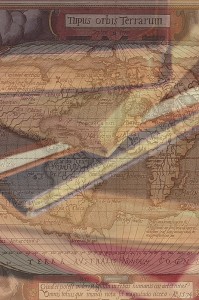According to Daniel Coyle, talent is a myth. Coyle recently synthesized results from years observing “centers of excellence” into a list of conditions that breed talent in “hotbeds” with
the combination of intensive practice and motivation that produces brain growth
Sounds like what we want our classrooms to be, right?
Although Coyle is focused largely on adult success and centers of excellence in sports or arts, his descriptions are very much what we hope our classrooms will be: places where our students maximize their potential. Coyle’s rules for adult success could work along the way for kids in a classroom, with some adaptation.
1. Staring: “fill your windshield with vivid images of your future self, and … stare at them every day.”
Encourage kids to develop the image and to keep it in front of themselves. Give them places to keep it: a journal where they can paste pictures, a locker wall, an electronic MePortfolio with a “dreaming of me” page. Have them stop to look at what makes an idol so special. What can he/she do that I want to do? Young ones have fleeting notions of what their future selves look like: fireman, snowman, roller coaster designer, cake boss… so maybe we need to ask what it is about that fleeting image that they like: Circle it. Write about it. Add more images of it. Keep refining the montage.
2. Stealing: “All improvement is about absorbing and applying new information, and the best source of information is top performers. So steal it….focus on specifics”
Kids call it copying, and they are very good at it. They watch how the pitcher spits, and they spit the same way. They listen to language at the bus stop, and …. But if we stare enough at the models from #1, we may come to notice things we’d like to copy. The trick is figuring out what to notice. That is where teachers can offer direction. We can help kids learn what to notice. We can talk as a class about what we observe, investigating which traits really matter. When they are young, kids need to develop the “eye” for what might be worth stealing. If you do one thing the same way Thomas Jefferson (or Copernicus or Shakespeare) did, what would it be? Show me.
3. Be stupid. (This is my favorite.) We rarely allow this. Humans spend a lot of time making fun of “stupid.” We post videos of it on YouTube and laugh at it on the playground. Coyle says talent hotbeds “encourage ‘productive mistakes’ by establishing rules that encourage people to take risks.” Guess we’ll have to toss out some of the testing culture. Darn.
I especially like this example: “once a week, make a decision at work that scares you.” How do we do this in class? Ask questions that have no answer. Put them on the test. Give credit for ANY attempt. Give students a weekly freebie to get credit for a WRONG answer backed by substantiated effort. Circling a guess one on multiple choice tests does not count. Even better: allow a one minute off the wall “be stupid” time for sharing what ifs and far fetched errors at the end of class.
The social dangers of being “stupid” at school can be avoided if systematically incorporated as part a creative teaching approach. David Markus notes that “Even Too-Cool-for-School Kids Can’t Resist” doing crazy, risky things if everyone can laugh about them together, such as in an arts-integrated math class.
5. Coyle’s observations about centers of excellence each warrant discussion, but I’ll skip to #5, his distinction between hard and soft skills, a place where most classrooms are seriously off target.
Hard, high-precision skills are actions that are performed as correctly and consistently as possible, every time.
Soft, high-flexibility skills, on the other hand, are those that have many paths to a good result, not just one. These skills aren’t about doing the same thing perfectly every time, but rather about being agile and interactive;
We do a pretty good job with hard skills. I will resist the urge to criticize our zealousness for careful delineation of the “right” way to do things.
Soft skills are all about process. In a test-driven world, we rarely have time to celebrate or focus on these “soft” skills, yet they are vital to talent hotbeds. Coyle tells us that “hard skills and soft skills are different (literally, they use different structures of circuits in your brain), and thus are developed through different methods of deep practice.” Our students need to routine, deep practice at looking for patterns, changing course, flipping to a different approach. No templates, no prescribed step by step method to recite and reuse. We so rarely ask questions where kids must experiment and analyze. Can you find one such question in your weekly lesson plans? How long will you let them suffer before you reveal the answer? Have you ever left a question unanswered yet scored it as part of a grade? How many parent calls did you get? To many people (including many teachers), open endedness is evil (see #3 above).

This is just four of Coyle’s eight observations, a recipe for the sourdough-starter-ish culture (pun intended) to grow talent.
We teachers often view classroom culture as something we cook up during week 1 of the year. Coyle’s recipe offers a richer, more appetizing promise, “the combination of intensive practice and motivation that produces brain growth.” I’d certainly like to taste-test that culture.












